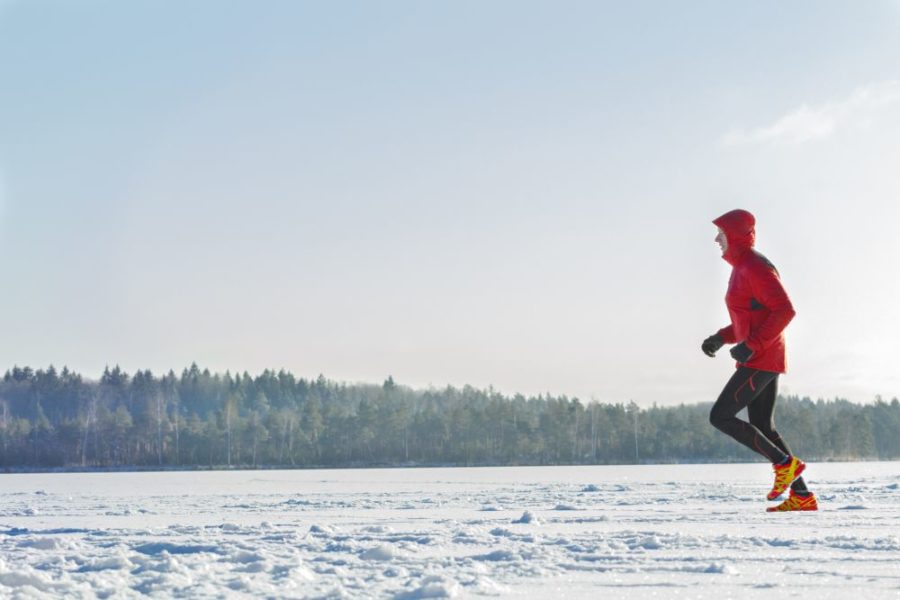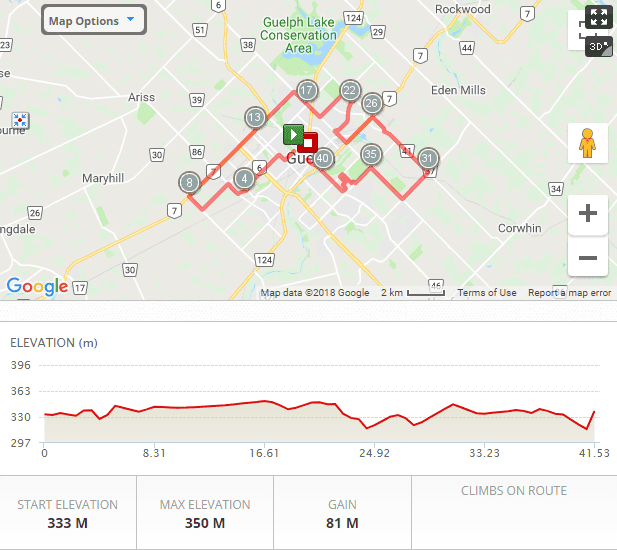Jeff’s Journey: Canada’s slowest and most unorthodox marathon
The story of the 16-year-long marathon tradition in Guelph, Ont.

What started as a hypothetical has turned into a 16-year-old unsanctioned, unorthodox marathon tradition. “Initially, it was me running my mouth, and it has turned into pain and suffering for many years.” What Jeff Haller is referring to is Jeff’s Journey, an underground marathon that has been run for nearly two decades in Guelph, Ont.
And they’re off! #JeffreysJourney2018 pic.twitter.com/3iIj4c6REK
— Jeff Haller (@SpeedRiverGuy) December 1, 2018
The history
Haller says this started at Easter 2003 in Trent Stellingwerff’s apartment. “The Boston Marathon was on and we were watching it. I hadn’t been running competitively for a year and a half, but when someone asked me how fast I could run a marathon I said that I could break four hours, for sure.” Haller’s friends didn’t take that statement lightly, they decided to put his residual fitness to the test and created a marathon course around the city of Guelph.
For context, Haller was a varsity runner at the University of Windsor who calls himself a “32-minute 10K kind of guy.” So he was a strong runner and someone who had already spent a lot of time on his feet, but not someone who was trained at the time.
Haller’s friend Jim Wardle planned a route, the same route that is used today, and it was decided that Haller would run his first-ever marathon, untrained, one week later. That Saturday in 2003, Haller ran a 3:56 marathon.
Haller describes the course as not athlete-friendly: “It includes almost every hill in Guelph and finishes at the Albion Hotel for celebratory burgers and beers. I asked that the course exclude one of the worst hills in the city, and that it finish at the hotel, but those were my only two conditions.” Since that day in 2003, the tradition has lived on. Every year at least one runner will embark on Jeff’s Journey.
Don’t let the smile fool you, the course took a toll on these fellas today. But another year is in the books for this stupid tradition! #JeffreysJourney2018 pic.twitter.com/qwp309Zv9y
— Jeff Haller (@SpeedRiverGuy) December 1, 2018
RELATED: How Geneviève Lalonde became one of Canada’s best distance runners
The selection process
According to Haller the selection process is, “Anyone we can sucker into it. Usually it’s someone whose competitive days are done, and who wants to say that they’ve run a marathon without the pressure of doing an official one.”
They find someone to do it, they pick a date, and then they go run it. Haller jokes they have the best athlete-to-support ratio of any marathon he knows of, usually at a 4:1 ratio of support to athlete (because typically one person runs it at a time).
A typical runner of Jeff’s Journey will be someone who’s been running, but not marathon training per se. There have only been a handful of competitors, including Haller, who have done it almost entirely untrained, clinging to residual fitness.

The rules
The first runner to express interest in doing the race for that year picks the date, and from there, anyone else who would like to participate has to run the race on the chosen day or sign up for the following year.
You’re not allowed to stop your watch once the race has started, not for stoplights, or cars, or bathroom breaks. The watch runs until you cross the finish line.
Non-participants are allowed to hop in and help during the race. For example, Eric Gillis and Reid Coolsaet have been known to help out.
There must be one race run every calendar year, but the races don’t have to be exactly a year apart.
There is no chip timing. Official time is Haller’s watch.
This is not an official Boston qualifier.
The race finishes at the Albion Hotel where the prize is beer and burgers.
Notable performances and participants
The best course performance to date is a 2:43 by Steve Koziarski (a former Guelph Gryphon) in 2009. University of Guelph coach Dave Scott-Thomas has also run the race. Scott-Thomas took two tries to complete the course due to the weather, as there was a major snowstorm on his first attempt.
Haller says that this can be an issue when Jeff’s Journey is put off until later in the year. “People usually put it off until November or December, and the year Dave did it there was a major snowstorm. The radio was telling people not to go outside if they didn’t have to. Dave stubbornly said he would do it but realized quickly that it was a mistake, so he quit before half and did the full thing the following week in 3:03.”
Everything about this event is fun, but for the person running it, it’s actually a pretty huge athletic accomplishment. Haller says that the time run on the Jeff’s Journey course is likely four to five per cent slower than it would be on a sanctioned course. “I know it would be easy to overestimate, but there has to be a big difference between this and running an actual race. It sounds silly, but things like crossing an expressway or waiting for a light to change add up. And it’s not just about the time accumulated waiting, it’s about your body thinking that the race is over and then having to start again.”
He continues, “Not having other competitors to keep you going also plays a factor. It’s not like you have anyone to chase.”


